
Discover the 10 main Brazilian ports for logistics
Transport and supply logistics are fundamental to Brazil's economic activities, essentially import and export. In this sense, the main Brazilian ports play an essential role, since they are the main channels of entry and exit of goods.
As Brazil is a country bathed by seas and oceans, the waterway sector is the most used in these two segments, both as exports and imports. The vast majority of cargoes that leave the country and go to economic partners go by ships, as well as those that arrive also go through the same modality.
However, for goods to reach the ports, it is necessary to have a well-organized transport logistics, together with the producing sectors, such as agribusiness and industries, for example.
The logistics of supplying these ports, and the withdrawal of products at these locations, depend on two transport segments: railroads and highways. These modes are very important for the goods to leave the productive sectors and reach the main Brazilian ports, making this transition to exports, for example.
This exchange is essential, including for the growth of transport modes, essentially rail. As the main function of the cargo railroads is the supply of inputs, and the ports are major terminals for this supply, the railroads have a certain degree of dependence on national ports.
For you to know more about the national ports, their importance, several curiosities, the railroads that supply these ports and much more, we have separated a list with the 10 main Brazilian ports, and we will give all the details below.
Content Index
Movimentação portuária dos principais portos brasileiros

Before listing the main Brazilian ports, we will make a brief note on the data related to port handling in Brazil, involving all national ports.
In Brazil, there are a total of 175 port facilities, including cargo ports, maritime terminals and waterway accommodations.
. Regarding data on the movement of goods in ports, the numbers are impressive. Only from January to July 2020, for example, 221.15 million tons of cargo were handled within Brazilian ports, essentially in the main Brazilian ports, an increase of 4.48% in relation to the previous year.
During this period, according to ANTAQ (National Waterway Transport Agency), they were, in order:
- Solid bulk - 60.75%
- Containers - 19.89%
- Liquid bulk - 14.59%
- Loose Load - 4.77%
Main Brazilian ports
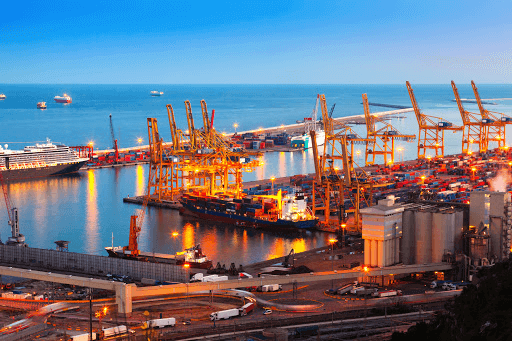
Now, we will now talk about the main Brazilian ports, taking several important points to decide which are essentially the size, the importance for the Brazilian economy and the goods handled.
Port of Vitória (ES)
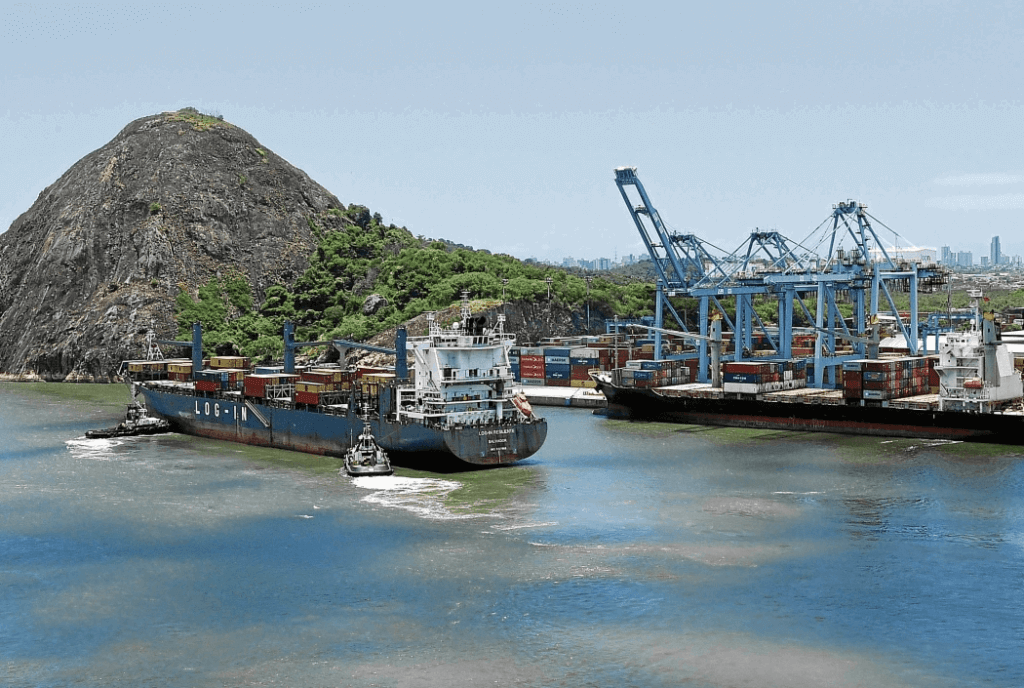
The first port on the list of main Brazilian ports is the Port of Vitória, located in the city of Vitória, in the state of Espírito Santo. It was created in 1906 and, currently, its stocks are owned by Companhia Docas do Espírito Santo.
This port has an important participation in the total cargo handling throughout the country, representing 1.57% in 2020, according to ANTAQ. During this period, more than 3.57 million tons of cargo were handled.
Due to the importance of the Port of Vitória, it needs a large transport fleet for supply, such as highways and railroads. In this sense, access to the port by the railroads is made by the Estrada de Ferro Vitória a Minas - EFVM, by Vale S.A., and by the Ferrovia Centro-Atlântica S.A., in the Central-East network.
Port of São Francisco do Sul
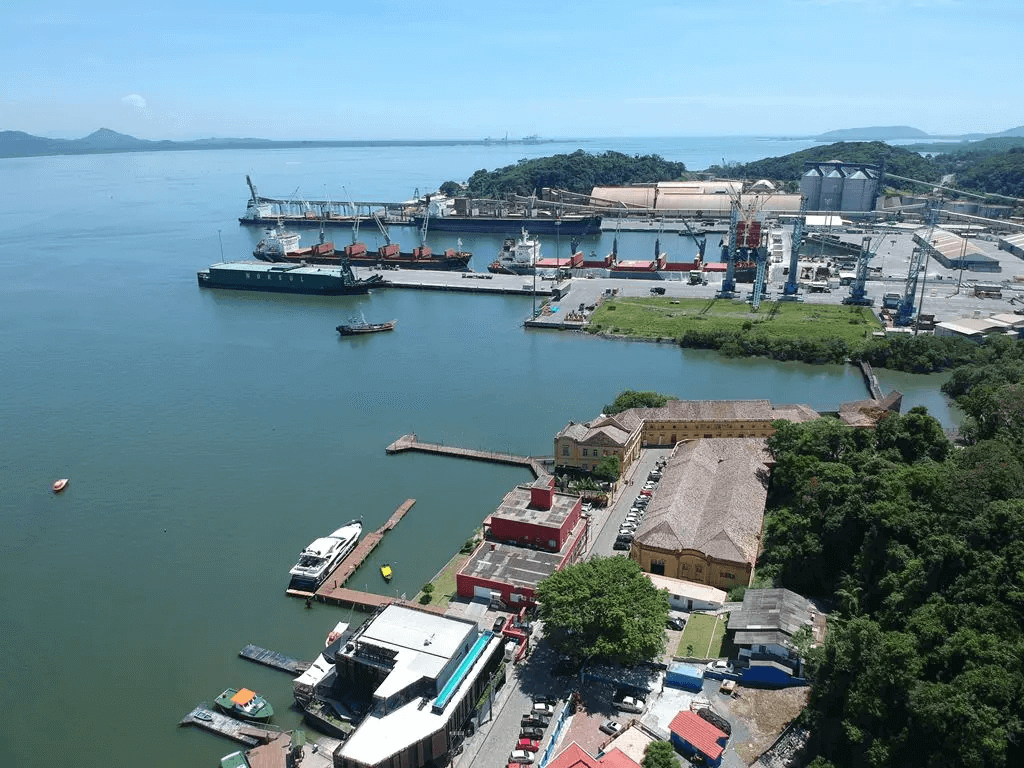
Following our list of main Brazilian ports, we have the Port of São Francisco do Sul, located in Babitonga Bay, in São Francisco do Sul, coastal city of Santa Catarina.
In 2020, the port handled a total of 7.16 million tons of cargo, representing 3.24% of all port handling in the country.
The port is supplied by the São Francisco Line railroad, which has operations controlled by the RUMO logistics company.
Port of Santarém
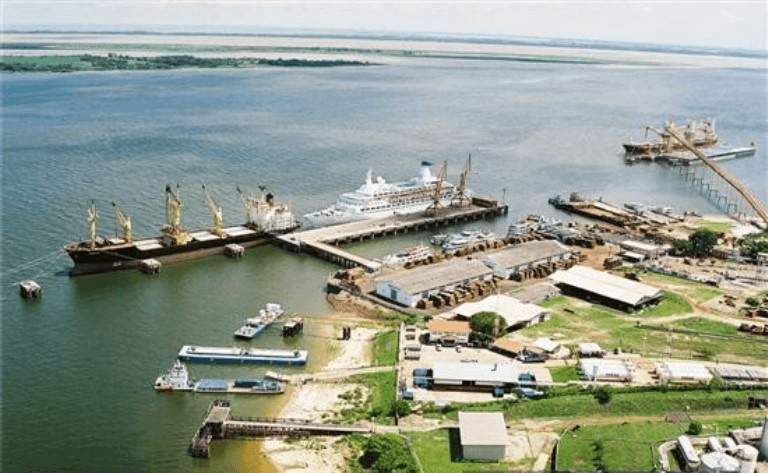
The Port of Santarém, located in the city of Santarém, in Pará, was opened on February 11, 1974, with a total length of 520 meters, also being one of the main Brazilian ports, and is constantly growing.
Until 2007, for example, it was the 23rd in the list of the largest port movements in the country. In 2020, however, it occupied the 8th position in this ranking, with 9.17 million tons transported, representing 4.15% of the total movement.
The loads that predominate this movement are:
- Wood;
- Diesel oil;
- Gasoline;
- Cassava flour;
This is another port that does not have land access by rail, only by road. Despite this, there are also projects for the construction of nearby railroads, which allow rail access to the port.
Port of Vila do Conde
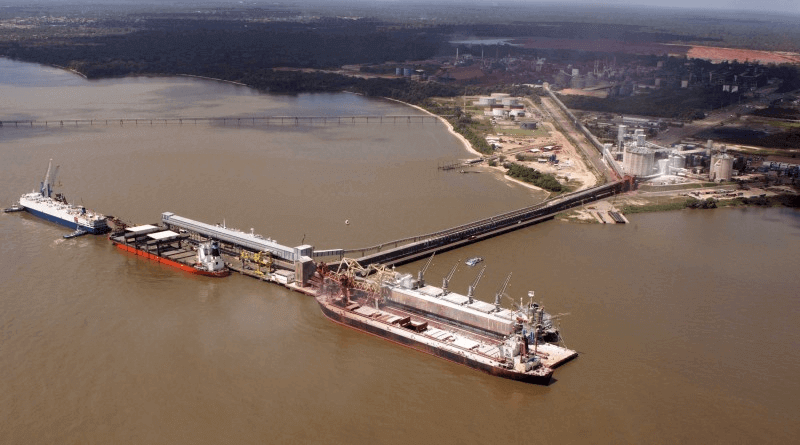
Located in the municipality of Barbacena, in the interior of the state of Pará, the Port of Vila do Conde is another important national port, and is among the main Brazilian ports.
Inaugurated on October 24, 1985 by Companhia Docas do Pará, the Port of Vila do Conde has a constant movement, with more than 9.20 million tons handled in 2020, representing 4.16% of the total port handling in the country.
The port is currently supplied only by river and road facilities, as there is no railroad that reaches the port.
However, there is an ongoing project for the construction of a railroad line that passes through the port, the Ferrovia Pará, which still suffers from strong resistance so that the work is not put into practice. Port of Itaqui
Port of Itaqui

Located in São Luís in Maranhão, Porto do Itaqui is also featured in the list of main Brazilian ports.
With direct connection to two railroads, Transnordestina and Ferrovia São Luís-Teresina, the Port of Itaqui is the 6th port with the highest cargo handling in 2020.
In the first half of this year alone, the port handled 14.16 million tons, representing 6.40% of the total national port movement.
Suape Port
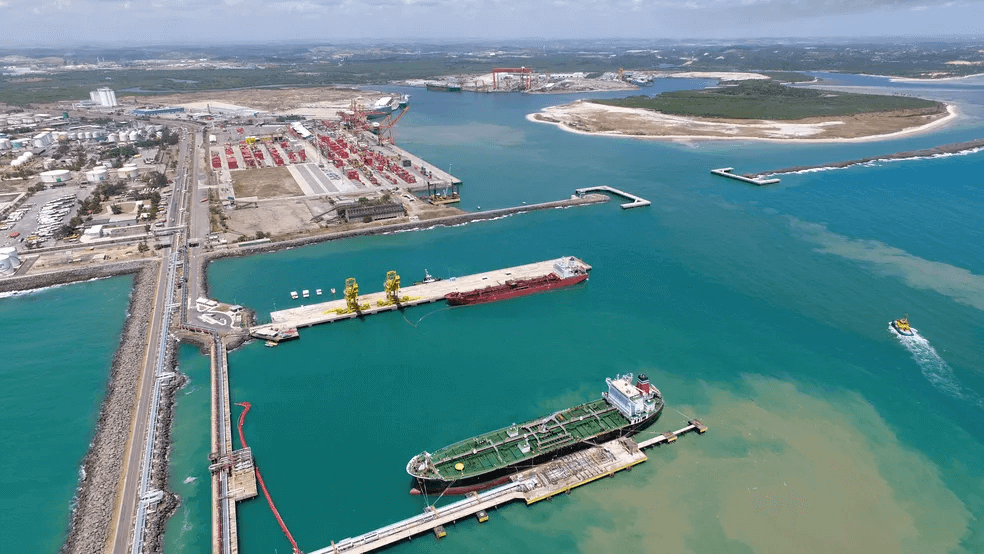
Opened in 1983, the Port of Suape is an important national port, being one of the main Brazilian ports.
Located in the metropolitan region of Recife, in Pernambuco, it is the largest public port in the Northeast region.
In the first half of 2020 alone, it handled 14.65 million tons of goods, representing 6.62% of the movement between Brazilian ports.
On land, it is supplied by highways and railroads, and, by rail, the Nova Transnordestina railroad is the main agent of this movement.
Port of Rio Grande
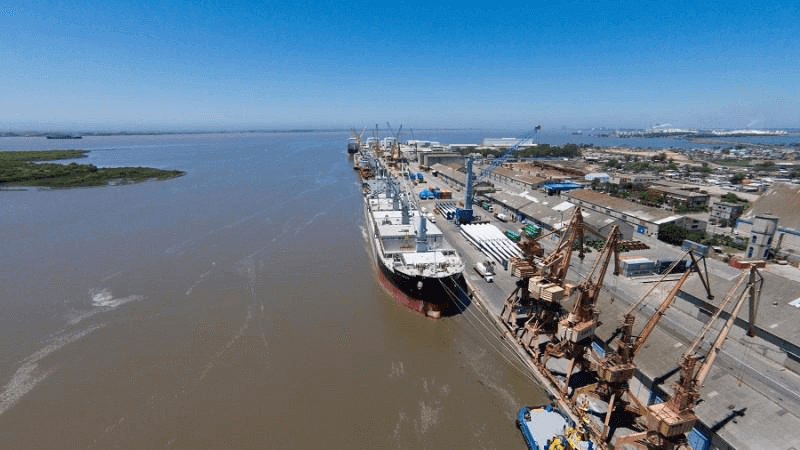
Located in the municipality of Rio Grande, in the state of Rio Grande do Sul, the Port of Rio Grande is the 4th largest port in movement in the last year. In that period alone, from January to July 2020, more than 15 million tons were handled, according to ANTAQ.
O acesso ao porto pelas ferrovias é feito através da Ferrovia Sul-Atlântico S/A, malha sul, e da Rede Ferroviária Federal S.A. (RFFSA), importantes ferrovias sulistas do Brasil.
Port of Itaguaí
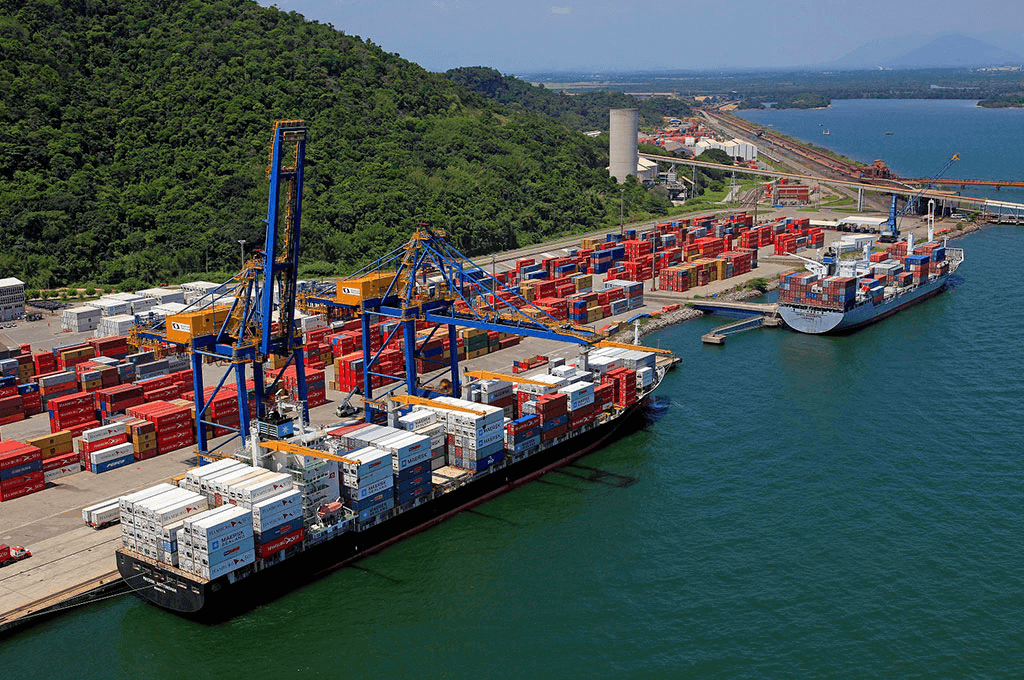
Inaugurated in 1982, the Port of Itaguaí is located in the State of Rio de Janeiro.
It is the main port in the state, receiving inputs daily in large quantities. Data for the first half of 2020 show that 23.56 million tons were handled, more than 8 million tons more than the previous port. This total represents 10.65% of the total cargo handled in that period.
Access to the port, by rail, is quite wide. Among the main railroads with access to the port, MRS Logística, which connects the port to São Paulo and Minas, and the Centro-Atlântica railroad which connects the port to several states, such as Minas Gerais, Espírito Santo, Sergipe, Goiás and São Paulo
Port of Paranaguá
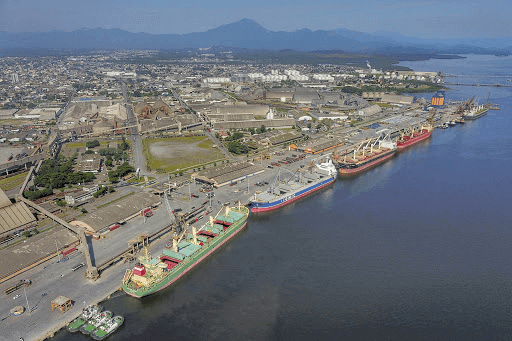
Certainly, the Port of Paranaguá has to be on any list of major Brazilian ports.
Located in Paraná, the Port of Paranaguá is the main exporter of agricultural commodities, especially soybeans.
In the first half of 2020, 30.34 million tons were handled in the port of Paraná, representing 13.72% of all port handling in that time.
Rail access to the port is via Ferrovia Sul-Atlântico S / A, Southern network, of Rede Ferroviária Federal S.A. (RFFSA).
An interesting curiosity about the Port of Paranaguá, is that it is open to the movement of tourists, students and businessmen who want to visit the facilities of the port to learn more about this important economic point in the country.
Porto de Santos é o mais importante da lista dos principais portos brasileiros
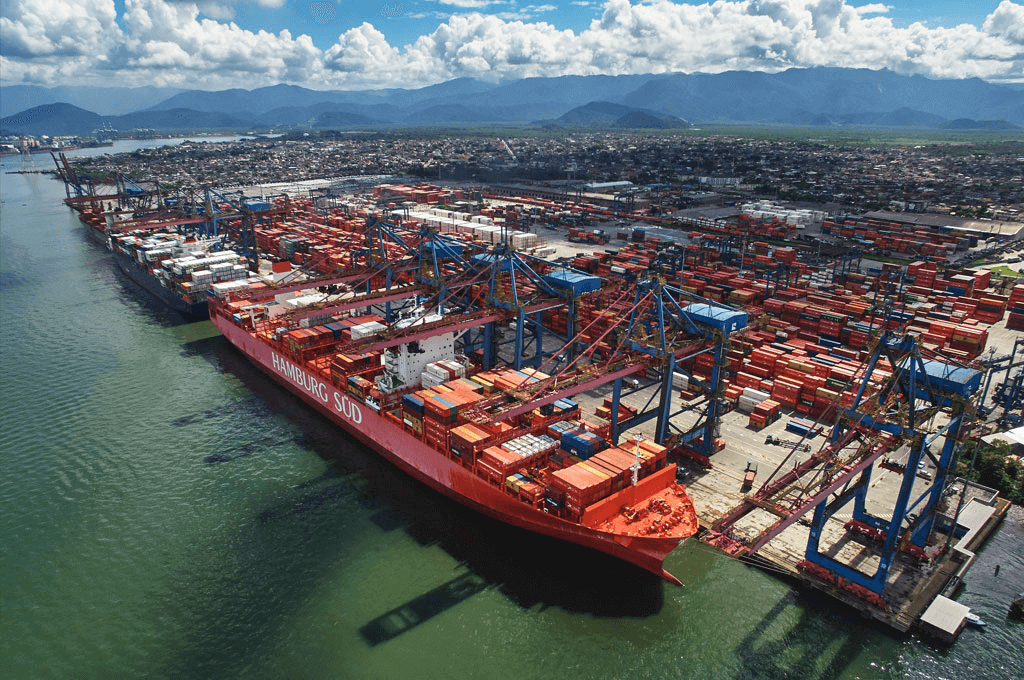
To finish our list of main Brazilian ports, we have the Port of Santos. Located in Baixada Santos, the Port of Santos is, without a doubt, the most important port station in the country.
It is the port that always tops the list of the largest cargo movements in the country. According to ANTAQ, in the first half of 2020 the port handled 65.93 million tons of goods, more than double that of the second placed and representing 29.81% of the total handling in that period.
Founded in 1892, it remains today as the largest port complex in Latin America. Rail access to the port is via two loops, organized by RUMO Logística (south loop) and MRS Logística (north loop).
To know everything about the size, importance and why the Port of Santos is the most important in the country, visit the link below and check out much more.
Conclusão sobre os principais portos brasileiros
Port activity is of paramount importance for the country, since this is the main modal used for import and export. Several ports make up the list of main Brazilian ports, but there are some that stand out. For this reason, we chose 10 ports that are fundamental, and that were the ones that had the most interesting numbers in the first half of the previous year, 2020. Looking at the data and the importance, we can conclude that the Port of Santos still stands out a lot in relation to too many, but several ports have been growing more and more, adding a lot of value to this very important modal.
https://www.cdp.com.br/porto-de-vila-do-conde
https://www.portodoitaqui.ma.gov.br/
http://www.suape.pe.gov.br/pt/porto/o-porto-do-futuro
https://webportos.labtrans.ufsc.br/Brasil/Movimentacao
https://blog.simplificafretes.com.br/quais-sao-os-principais-portos-do-brasil/







